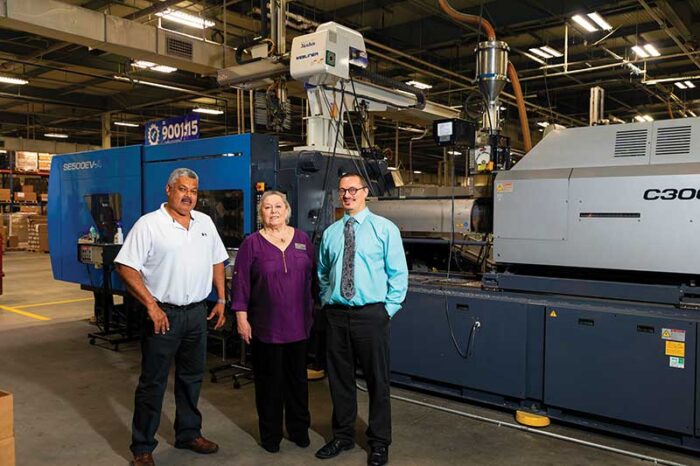Preventing Profit From Going Down the Drain

In an industry where profit is defined as pennies, adding pennies to the bottom line makes the difference between a net loss, an average year or being a top performer, the issues we raised earlier in the week that can be caused by rising material cost prices, especially at the current pace, become critical for distributors.
This can be further exacerbated by supply chain issues that are affecting many manufacturers and, as Axios, labeled “the manufacturing boom’s bottleneck.”
And according to a report from Ocean Insights reported in Shipping and Freight Resource dated February 11, the transportation delays on imported products from China are expected to continue for some time due to Chinese quarantine measures grounding trucker as well as Chinese New Year. Ocean Insights cautions that “it may take several more months for supply chains to return to some semblance of normality.” Ocean Insights points to internal travel restrictions imposed by Chinese authorities, requiring domestic travelers to quarantine for 14 days after traveling, as a new bottleneck for global shipping and supply chains.
The Profit Improvement Opportunity (or conversely, profit and productivity leakage)
These issues are combining to create a profit improvement opportunity for distributors if well managed according to Greg Smith, VP Strategic Partnerships with SPARXiQ. Many may know Greg from his distributor days. He started a small distributorship in Vermont and, after selling his business, was EVP for Granite City Electric Supply where he was responsible for pricing along with having responsibility for marketing, purchasing and other activities.
After seeing Monday’s posting regarding rising metal prices, Greg reached out for a conversation and then offered to share additional thoughts that can affect distributor profitability during times of rising prices. His input is based upon his 40+ years as an electrical distributor and having primary responsibility for profit and profit improvement.
Pricing Process Improvement Areas, Pricing Opportunities and Proactive Profit-driven Sales Management
2021 starts with some of the highest numbers of manufacturing cost increase notifications that the industry has seen in a while, mostly due to metal increases. For many distributors, this can be problematic as they struggle to update thousands of price records within their ERP. Updating price records is just one of many financial, inventory, accounting, and analytical considerations that distributors will need to address. The volume and percentage increase of price changes this year is both a challenge and an opportunity.
Distributors’ Challenges (and areas for profit and productivity leaks)
- Updating thousands of COGS records
- Updating thousand if not tens of thousands of price records (if your matrix and contracts are not tied to the replacement or average COGS)
- The need to review all contract pricing
- Review/pull all quotes pre-price increase
- The need to review all customer-specific pricing (mostly fixed pricing)
- Remove the ability for salespeople to use the last price paid
- Making sure your cost basis in order entry is equal to the newor replacement COGS
- Potential for customer DSO to grow, some customer contracts do not allow for commodity fluctuations.
- Cash flow could be a massive deal for a lot of contractor customers
- Customers are going to be squeezing your sales team to write orders at pre-increase levels
- Accounting for increased sales, i.e., did you sell more units or fewer units? What contributed to expanded revenue? Don’t be lulled into thinking because you grew 10+% in 2021 that you took market share
- Reduced gross margins; from my experience, if a distributor does not react quickly,they could realize as much as a 200 bps drop in margins.
- SPA/CPA claim submission (special pricing allowances / contract pricing agreements)
Capitalizing on the opportunity;
- Clean up your sales processes
- Update all contracts and customer-specific pricing
- Increase gross margins by 200-400 bps (consider, if a manufacturer increases by 5%, you increase 5.5% or even 6.2% based on product group visibility, or at least a nominal percent more or on different velocity items)
- Identify customers that are at high risk, reduce services and increase prices
- Identify low visibility products and add extra margins
- If you have not already done so, segregate your customers by type and size, then make sure you have margin stratification between the tiny and huge, target 800-1000 bps
- Increased inventory valuation, LOC (letter of credit)
- Put guard rails around some of the sales team that limits their ability to make changes to your pricing matrix without authorization
- Put processes in place that create revenue and profit accountability
- It’s a great time to adjust sales compensation plans include market share growth, new account penetration, growth in units, increase in GM, etc.
- Re-invent your analytics approach, rethink your KPIs. The old days of just measuring gross sales and gross margin increases are no longer sufficient. If you have a 10% growth in revenue for any given period, you should quickly and easily identify the contributing factors. During periods of hyper price increases, it is easy for low-performing divisions, customers, products, and vendors to get lost in the shuffle.
There is no better time than the present for Distributors to increase margins (EBITDA) than today; with volatility comes margin growth opportunity for those who want to do the heavy lifting. To be clear, this is NOT about taking advantage; this is about your opportunity to improve profitability. A 3-4% EBIT, given all the risks involved, should be a 5-8% EBITDA; at a minimum. this year is a great time to start the process.
If some of these areas make sense, perhaps a conversation with Greg may be warranted (email, LinkedIn)?
Takeaway
Consider, if some, or all, of the opportunities Greg mentions are not capitalized upon, then the opportunities Greg mentions could become productivity and profit drains on your business.
Greg’s point about the “risks involved” and the profitability improvement opportunity, especially doing this based upon sales and margin improvement rather than leveraging suppliers via back-end rebates, is also an opportunity for distributors to generate incremental investment funds to support new initiatives that require continuous funding to meet growing customer expectations such as more robust eCommerce / eBusiness services, new / enhanced value-added services, investing in specialists, and more. Let alone funding increased operating costs (wages, healthcare, taxes, utilities, etc).
So, the question is, are you worth improving your profits to enable investment into your business?





















